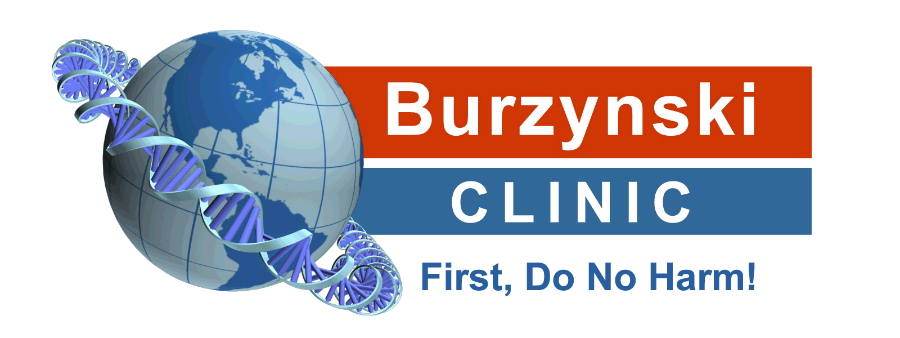Hope for Brainstem Glioma: Phase II Study Results | Houston, TX
Oct 4, 2025 | By: Burzynski Clinic
Each year, over 250 children are diagnosed with brainstem gliomas, including the difficult-to-treat non-DIPG tumors. Conventional treatments like chemotherapy and radiation often have limited success and harsh side effects. However, Dr. Stanislaw Burzynski and the Burzynski Clinic offer hope through Antineoplaston therapy—a targeted, non-toxic treatment showing promising results in a recent Phase II trial. This post explores the study’s findings, their impact on pediatric oncology, and how families can access these options.
Understanding Brainstem Glioma and the Challenge of Treatment
Brainstem gliomas develop in the brainstem, the vital area of the brain responsible for controlling essential functions such as breathing, heart rate, and blood pressure. Due to the brainstem’s critical role and sensitive location, these tumors are notoriously difficult to treat, especially in children.
Non-DIPG gliomas, while less aggressive than the more common DIPG tumors, still pose significant treatment challenges. Surgery is often impossible because of the tumor’s location, and radiation or chemotherapy may offer limited benefit with substantial risks.
This difficult prognosis has driven researchers and clinicians, including Dr. Burzynski and his team at the Burzynski Clinic, to seek safer, more effective treatments that can improve both survival and quality of life.
What Are Antineoplastons?
Dr. Stanislaw Burzynski developed Antineoplastons as a class of naturally occurring peptides and amino acid derivatives aimed at selectively targeting cancer cells while sparing healthy tissue. Unlike conventional chemotherapy, which can damage both cancerous and normal cells, Antineoplastons work by:
-
Targeting genetic mutations specific to cancer cells
-
Promoting apoptosis, or natural cancer cell death
-
Restoring normal communication between cells
-
Minimizing toxicity to healthy tissues
This method offers a more personalized and less toxic approach to treating pediatric brain tumors—a vital consideration for children’s developing bodies.
The Phase II Clinical Trial at Burzynski Clinic
Design and Goals:
The Phase II clinical trial, conducted at the Burzynski Clinic under Protocol BT-11, enrolled pediatric patients diagnosed with non-DIPG brainstem gliomas. Participants received tailored doses of Antineoplaston A10 and AS2-1, based on their tumor characteristics and overall health.
The trial aimed to:
-
Measure tumor response and shrinkage
-
Monitor overall survival rates
-
Evaluate patients’ quality of life and neurological function throughout treatment
Dr. Burzynski’s team monitored patients rigorously, managing side effects while tracking treatment progress in real time.
Key Findings from the Trial: Why Families Are Hopeful
The results of this Phase II study have been encouraging, suggesting that Antineoplaston therapy could offer meaningful benefits where conventional therapies have failed.
Promising Tumor Responses and Symptom Improvement
-
Several patients showed significant tumor shrinkage or stabilization.
-
Improvements were noted in neurological functions such as mobility, speech, and alertness.
-
Unlike traditional chemotherapy, the therapy was generally well-tolerated, allowing children to maintain higher energy levels during treatment.
Potential for Long-Term Survival
-
Some children experienced extended remission periods after treatment, highlighting a shift in how non-DIPG might be viewed—not solely as a terminal condition.
-
Early intervention appears to be a key factor in achieving these durable responses.
Quality of Life and Reduced Toxicity
-
One of the most important findings was that many patients experienced fewer side effects compared to standard therapies.
-
The focus on minimizing toxicity helps protect children’s developing organs and improves their overall well-being during treatment.
Implications for Pediatric Oncology: A New Standard?
The encouraging outcomes from Dr. Burzynski’s Phase II trial at the Burzynski Clinic point toward a potential new paradigm in treating pediatric brainstem gliomas—one that balances treatment efficacy with quality of life.
If larger, multi-center trials confirm these results, Antineoplaston therapy could become an important addition to pediatric oncology, providing families with safer, more personalized treatment options that focus on both survival and preserving daily function.
Continuing Research and Patient Stories at Burzynski Clinic
The Burzynski Clinic remains committed to advancing this line of research. Future studies aim to:
-
Optimize dosing strategies
-
Investigate combination therapies with conventional treatments
-
Conduct long-term follow-up to better understand sustained benefits
Beyond clinical data, many families treated at the Burzynski Clinic share powerful personal stories of hope and progress—children regaining skills, returning to school, and living fuller lives. These narratives underscore the real-world impact of innovative care.
Where Do We Go From Here? Offering Hope and Options
Treating pediatric brainstem gliomas remains challenging, but Dr. Burzynski’s Phase II trial offers hope. Families should know that alternatives like Antineoplaston therapy exist, focusing on quality of life and survival. If your child is diagnosed, the Burzynski Clinic offers consultations to explore eligibility and treatment options.
Learn More and Take the Next Step
To discover more about the promising potential of Antineoplastons or to see if your loved one qualifies for treatment, visit the Burzynski Clinic’s website.
Remember, you are not alone in this fight. With innovative care, scientific dedication, and compassionate support from experts like Dr. Burzynski and the Burzynski Clinic team, there is hope for a better future.

